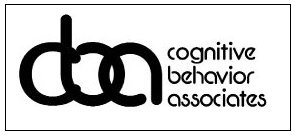Attention deficit hyperactivity disorder, commonly referred to as “ADHD,” is one of the most common mental health disorders among children and teenagers. However, millions of adults are also impacted by the condition. Roughly 8 million adults have ADHD, but research has shown only 20% of adults are aware they have the condition. OF those who are aware, only a small percentage actually get treatment. Because the condition can impact your daily life, it’s important to get treatment. Below you will find adult ADHD statistics and facts, in addition to how you can get help if you have the condition.
Adult ADHD Statistics and Facts
Diagnosing ADHD
Diagnosing ADHD involves a comprehensive evaluation by a medical professional. A therapist, psychiatrist, or psychologist trained in diagnosing and treating ADHD can complete the evaluation. The ADHD evaluation process involves a thorough look at your medical and psychiatric history and various diagnostic tests. Understanding your family history, including any family members who have the disorder, can also be helpful. An ADHD diagnosis is often given when an individual displays a persistent pattern of inattention and/or hyperactivity-impulsivity that interferes with their daily activities
The average age for an ADHD diagnosis is 7 years old. While medical professionals used to think that children eventually grew out of the disorder, modern research indicates that more than 60% of children who were diagnosed in childhood still have the condition as adults. The cost of undiagnosed ADHD is massive. In fact, it is estimated that it costs the United States economy $138 billion annually due to lost income and productivity. The cost for the person diagnosed with ADHD can also be grave as it can seriously impact their daily life, including their professional, personal, and romantic life.
Gender Differences and ADHD
There are gender differences when it comes to diagnosing ADHD. In children, boys are more than twice as likely to be diagnosed as compared to young girls. This narrows into adulthood as men are diagnosed at a higher rate, with women just a few percent behind. Adult men are diagnosed at a rate of 5.4%, while adult women are diagnosed at a rate of 3.2%. Women tend to be diagnosed later in life as well, often in their 30s and 40s. The research is still inconclusive as to why this is the case. Researchers are studying whether men are more prone to the disorder, or whether symptoms are overlooked in women.
Race and ADHD
Some research has shown racial disparities in the diagnosis and treatment of ADHD. One study found that white children are more likely to be diagnosed with the condition as compared to Black and Hispanic children. However, more research is necessary as there are factors that impact these numbers. Factors such as bias among health care providers and education professionals, cultural differences in the interpretation of symptoms, and mistrust of the medical system in many communities.
Along with white ethnicity, the same study also linked higher odds of being diagnosed with ADHD. In addition to ethnicity, adults who are male, younger, employed, divorced, and those who have achieved higher levels of education are more likely to be diagnosed with the disorder.
Genetics and ADHD
While researchers are not sure what causes the disorder, it is known to run in families. Those with a family history of ADHD are 4 to 6 times more likely to have the disorder. Research has shown that roughly 40% of children with ADHD also have at least one parent with the disorder.
Adult ADHD Treatment in Los Angeles
If you are concerned that you may have ADHD, adult ADHD treatment in Los Angeles can help you take control of your mental health. Talk therapy can be highly beneficial in addressing your symptoms. In fact, cognitive behavioral therapy in Los Angeles has been proven to be highly effective in treating ADHD in adults.

